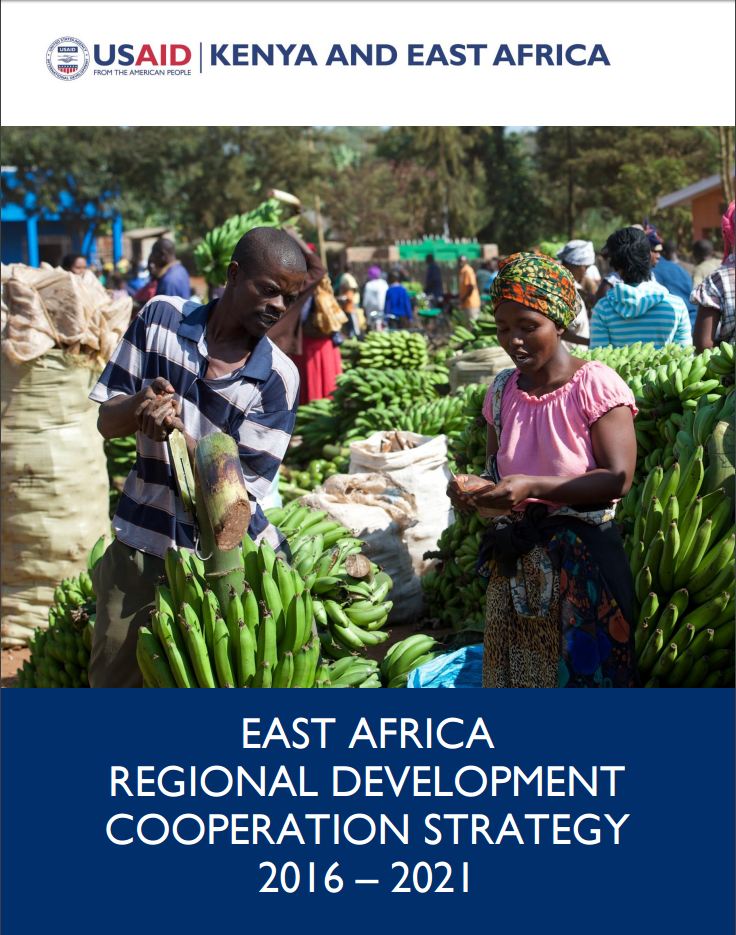East Africa is rising and becoming more intra-dependent. Opportunities to advance sustainable economic growth and human development are increasing. At the same time, challenges that are inherently regional have become more constraining and have increased the region’s vulnerability to negative shocks. Mitigating these threats and achieving timely and durable progress across the region will require investment in the future of East Africa based on a strategy that emphasizes greater integration, collaboration and cooperation among East African institutions and their partners.
With a few exceptions, East Africa’s economies are among the fastest-growing in the world, with technological change sweeping across the region and offering tremendous opportunities in banking, medicine and business. Labor and capital are moving faster and more easily across borders. East African businesses are better able to access regional and global markets. Opportunities abound. In the future, the stability and prosperity of the region will depend on continued regional integration led by regional institutions, both as a tool for sustainable economic growth and to promote resilience. Through integration and with the support of partners, including the U.S. Government (USG), East Africa can become the world’s next major economic success story.
The decades-long movement within East Africa to integrate individual economies and address challenges through coordinated action is rooted in goals of using market scale, competition and collaboration to drive development. USAID has supported regional integration in East Africa since the 1990s. In the intervening years, East Africa has become more interconnected with the global economy, the international community and the United States in particular. Intra-regional trade within the Common Market for Eastern and Southern Africa (COMESA), for instance, has grown from $15 billion in 2009 to $21 billion in 2014. Since 2008, exports from the East African Community (EAC) to the U.S. have grown by 29 percent. Nevertheless, East African integration still has a long way to go. Intra-regional trade is only 13 percent, compared to trading blocs in Europe (60 percent) and Asia (40 percent).
In this Regional Development and Cooperation Strategy (RDCS), USAID/Kenya and East Africa (USAID/KEA) employs lessons from the past while setting a new standard of cooperation. It supports African leadership and aspirations by aligning with key African and global development agendas such as: (1) the African Union’s Agenda 2063, (2) the global “Agenda 2030” (outlining the Sustainable Development Goals) and (3) the strategies of each of the partner regional institutions. Similarly, the RDCS is consistent with U.S. global and regional foreign policy priorities as conveyed in President Barack Obama’s U.S. Strategy Toward Sub-Saharan Africa.
This five-year RDCS is grounded by a long-term vision of an integrated, prosperous and resilient East Africa. It proposes to work directly with and through regional partner institutions to achieve three development objectives that reinforce each other toward achieving the overall goal of enhancing East African-led sustainable economic growth and resilience. In keeping with aid effectiveness principles and the USAID Forward initiative, the vision and goal align with the aspirations of East Africans and their institutions, as set out in their mandates and strategic plans.
Through strengthened partnerships with regional institutions, the private sector, and civil society organizations, USAID/KEA’s strategy will deepen integration, improve cross-border risk management and strengthen regional institutions’ leadership and learning. To accomplish this, the strategy will support East African leaders as they harmonize policies and standards and scale up technologies and best practices in trade, investment, agriculture, energy transmission, environmental and natural resource management, climate change and countering violent extremism (CVE), as well as manage critical health threats. In addition, this strategy will seek to strengthen East African institutions’ leadership of the development agenda by enhancing their systems and structures, technical capacity and use of evidence in policymaking, and reaffirm their commitments to inclusive development principles.
By focusing on regional partner institutions, this RDCS is different from past USAID regional strategies that are geographically defined by their support to specific bilateral USAID missions or by country coverage. In terms of scope, USAID/KEA traditionally defines East Africa to include the 15 easterly countries in the continent, as shown in the map on page 1. The scope of this strategy, however, is set by regional East African partner institutions — specifically the three key regional intergovernmental organizations (RIGOs), as these organizations are to this strategy what a country government would be to a bilateral strategy.








Comment
Make a general inquiry or suggest an improvement.